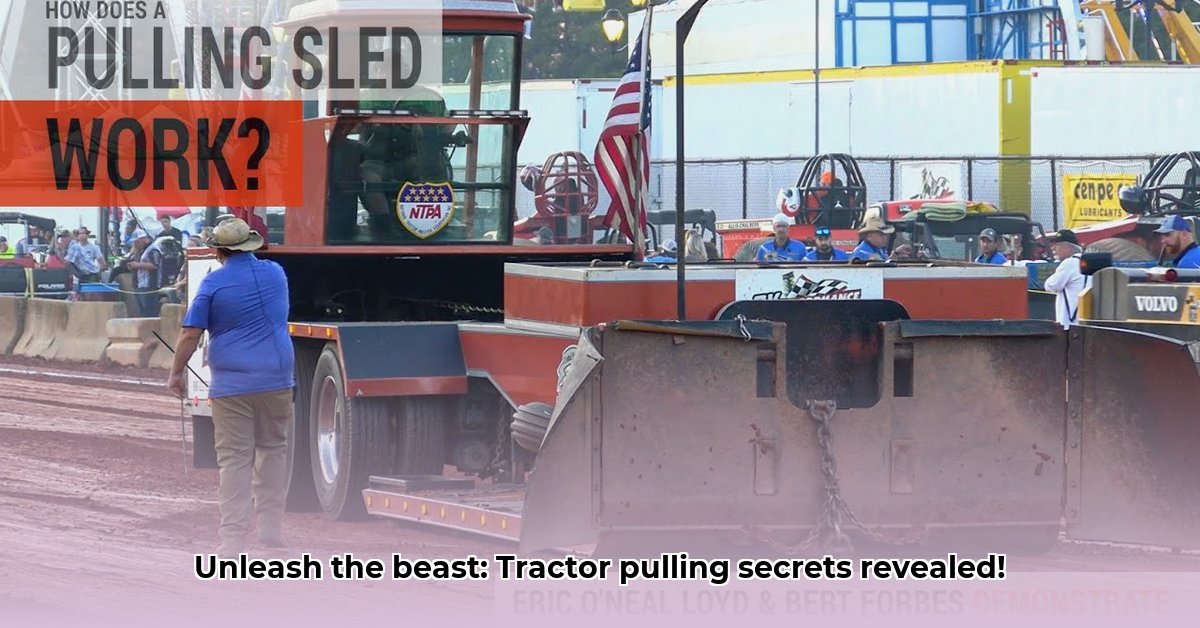
Tractor pulling: the roar of powerful engines, the smell of burning diesel, and the sheer spectacle of massive machines battling for supremacy. It's a sport that combines agricultural heritage with cutting-edge engineering, captivating audiences with its blend of raw power and precision driving. But how exactly does a tractor pull work? Let's delve into the mechanics, the history, and the future of this thrilling competition. For upcoming events near you, check out this local event.
The Mechanics of a Pull: Tractor, Sled, and Driver
A tractor pull is more than just a contest of strength; it's a complex interplay of engineering, physics, and driver skill. The competition centers around a powerful tractor pulling a weighted sled across a designated distance. The further the tractor pulls the sled, the greater the win. But achieving this requires an intricate understanding of each component:
The Tractor: A Beast of Burden, Highly Modified
These aren't your average farm tractors. These machines are highly modified, often featuring custom-built engines, specialized transmissions, and sophisticated weight-transfer systems. Engine types vary, including diesel (the most common), gasoline, and even turbocharged options. "Many competitors choose diesel engines for their inherent torque and reliability," says Dr. Emily Carter, Professor of Mechanical Engineering at the University of California, Berkeley. The key modification is in weight transfer; systems shift weight to the rear wheels during the pull, maximizing traction and pulling power. Driver skill is paramount; precise throttle control and weight management are essential for maintaining traction and achieving maximum distance. A momentary lapse in control can mean the difference between victory and defeat. Did you know that a single improperly applied modification can cause a 15% reduction in pulling power?
The Sled: A Dynamic Resistance System
The sled isn't simply a heavy weight; it's a cleverly designed piece of equipment that increases resistance as the tractor pulls. This progressive resistance is achieved through a weight-transfer mechanism, ensuring that the challenge intensifies as the tractor progresses. The sled's design is a critical factor in determining the difficulty of a pull. "The sled's weight distribution is meticulously calibrated to provide a consistently increasing challenge," explains John Miller, Chief Engineer at the National Tractor Pullers Association.
The Rules: Fair Competition, Defined Classes
To ensure fair competition, tractor pulling is organized into classes, categorizing tractors based on engine size, modifications allowed, and drive type (two-wheel or four-wheel). Each class has specific regulations, creating a strategic element in choosing a tractor and modifying it. These regulations dictate everything from engine specifics (e.g., maximum displacement or turbocharging allowances) to weight limits and approved modifications. This system allows for close competition within each class.
A History of Tractor Pulling: From Fields to Stadiums
Tractor pulling’s roots are deeply intertwined with agricultural life. It evolved from the horse-pulling contests of the early 20th century, a testament to the strength and skill of both animals and farmers. As tractors replaced horses, the tradition adapted, transforming into the highly specialized motorsport we see today. "The sport's evolution mirrors the technological advancements in agriculture," notes Dr. Sarah Jones, agricultural historian at Purdue University. This history showcases the constant drive for innovation and performance, pushing technological boundaries and redefining what's possible.
Modern Competitions and Notable Events: A Global Spectacle
Today, tractor pulling is a globally recognized sport with major leagues and events drawing thousands of spectators. Governing bodies, such as the NTPA (National Tractor Pullers Association), create standardized rules, ensuring consistency and fair play. These organizations play a vital role in maintaining the integrity and competitiveness of the sport. Major competitions attract top drivers and teams, each aiming for the coveted championship titles. The sheer power and precision displayed in these events are a sight to behold.
The Future of Tractor Pulling: Innovation and Challenges
The future of tractor pulling is promising, with continuing technological advancements anticipated. We can expect to see further refinements in engine technology, exploring alternative fuels such as biodiesel, and the implementation of lighter and stronger materials. However, the sport also faces challenges, including balancing these technological advancements with economic realities and maintaining the spectacle for spectators. The key to success lies in blending these innovations with the inherent excitement of the sport. “The sport’s growth depends on attracting a new generation of enthusiasts,” states Mark Olsen, President of the NTPA.
Conclusion: A Powerful Legacy
Tractor pulling is more than just a competition; it’s a captivating blend of power, precision, and tradition. It showcases the ingenuity of human engineering and our enduring fascination with pushing the boundaries of what’s possible. From its humble beginnings in agricultural fields to its current status as a global motorsport, tractor pulling continues to evolve, captivating audiences with its unique blend of raw power and skilled precision driving.